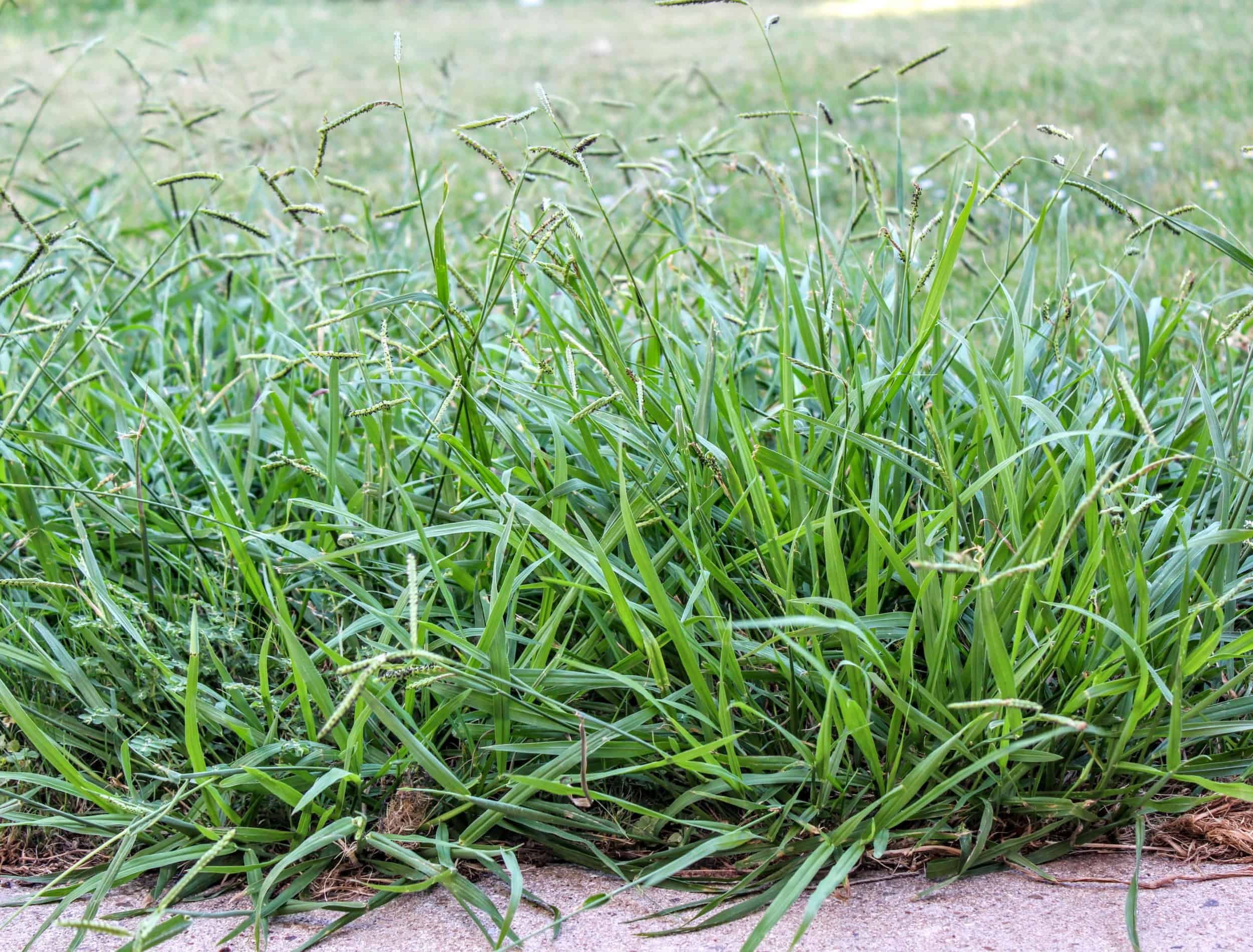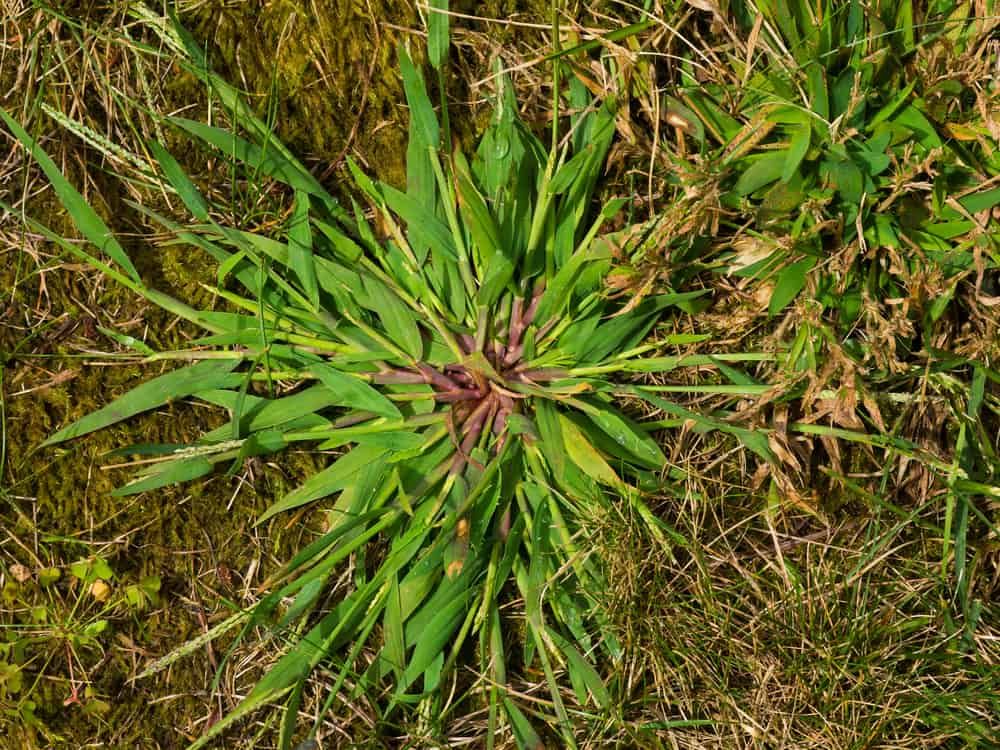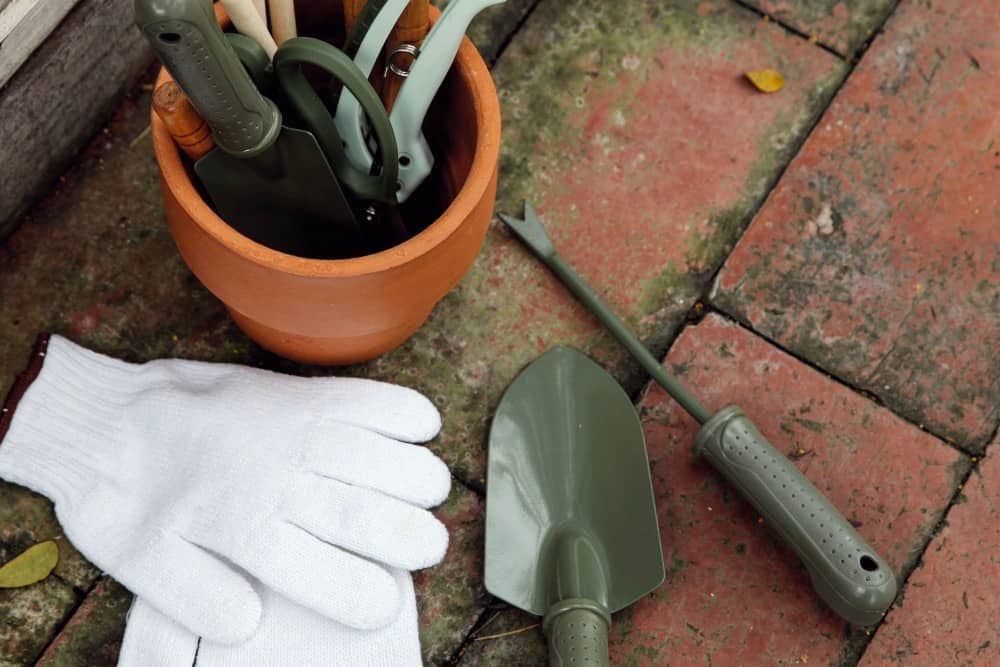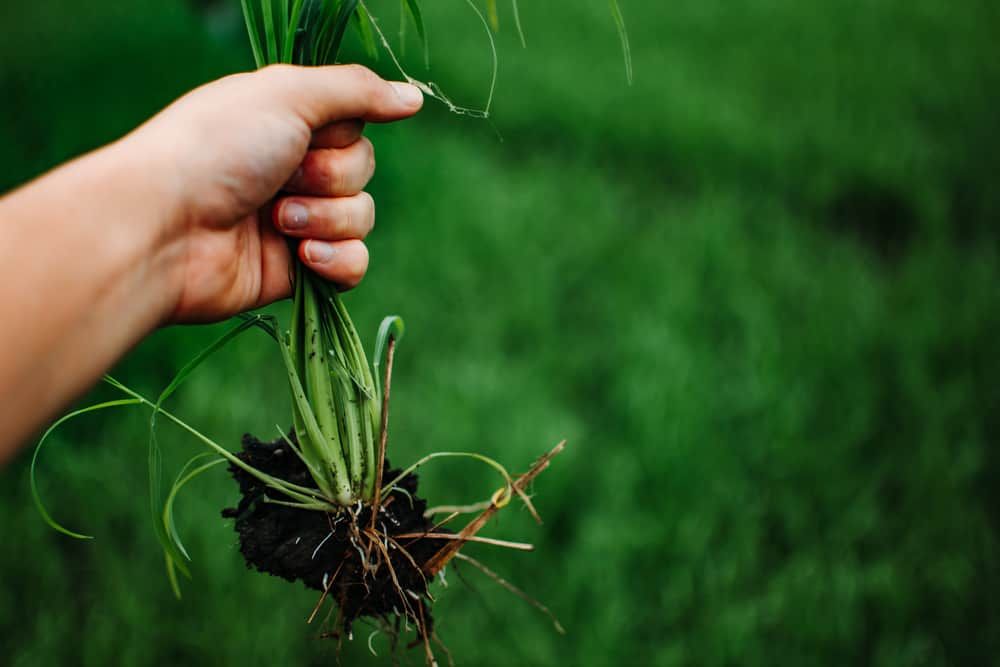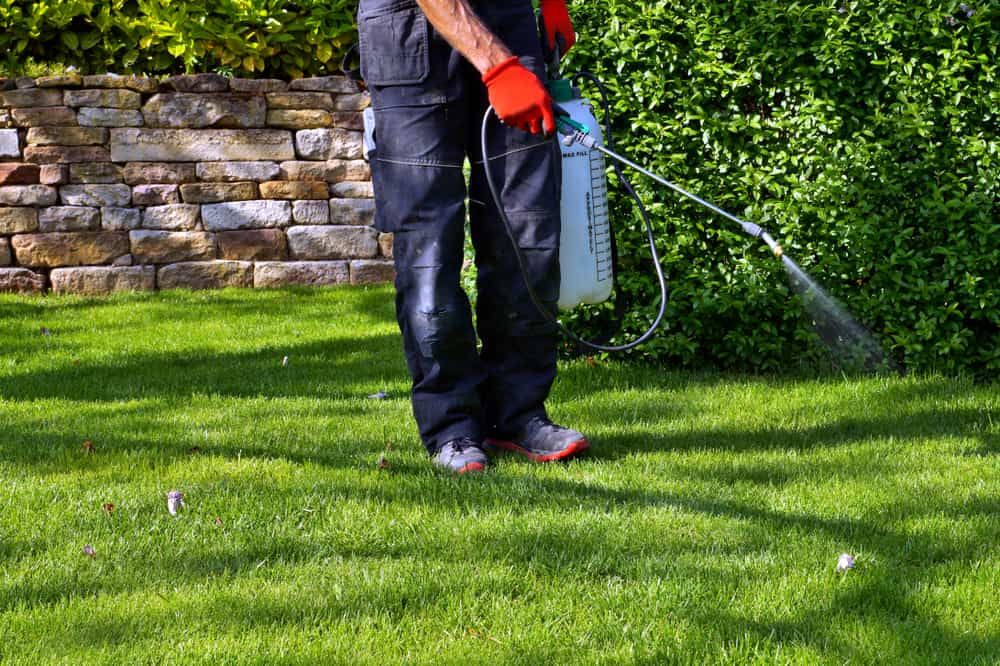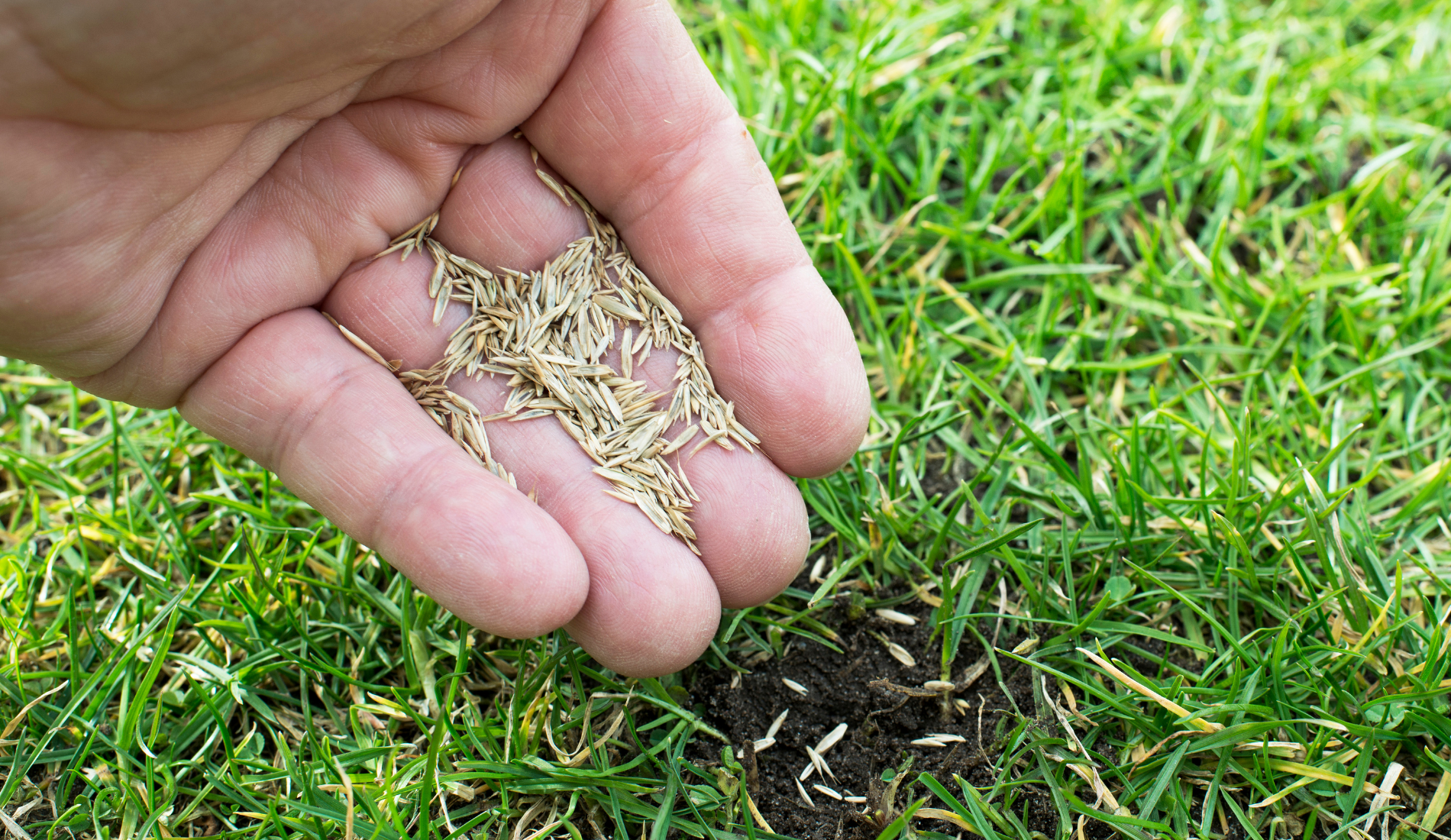Crabgrass is an annual weed that grows in thin and bare spots on your lawn. Though it has an unsightly appearance, it can invade the rest of your lawn, crowding and killing turf grass, so it's crucial to get rid of crabgrass as soon as you notice it.
But how can you identify crabgrass to ensure it's the issue you're dealing with? And what are the best removal methods to ensure it's gone for good? Fortunately, you'll learn everything there is to know below, as well as the best prevention techniques to keep your lawn happy and healthy!
Identifying Crabgrass
Image credits: Christian Delbert via Shutterstock
There are many species of grass and weeds and it's important to use the right products to treat and remove certain issues. Crabgrass looks like grass, but it is a weed. Crabgrass got its name from its appearance: the blades grow outwards, looking similar to crab legs from above. The grass blades are also wide and yellowish in color, which contrasts the dark green color of common lawn grass.
Crabgrass thrives in dry weather and sunny spots, so you may notice it during the hottest days of the season. It may also appear on turf that has become weak from issues such as overwatering. In fact, the presence of crabgrass points to an underlying issue, so there's a good chance your yard needs a little TLC.
Also, it is best to remove crabgrass as soon as you notice it growing. If it has a chance to mature, it may drop seeds and continue to grow throughout your lawn, which is more difficult to manage.
Tools You'll Need to Get Rid of Crabgrass
Image credits: Gary Barnes via Pexels
To handle and prevent crabgrass, there are a few common tools you'll need. Find the list of essentials below.
- Gardening gloves
- Hand trowel or weed pullers
- Herbicide
- Lawn Fertilizer
- Mulch
- Lawn mower
- Watering can or hose
- Grass seed
How to Get Rid of Crabgrass
Removing Crabgrass by Hand
Image credits: FootMade0525 via Shutterstock
Completely eradicating crabgrass from your lawn or garden takes more than one year because the weeds drop many seeds, which survive through the winter and tend to germinate in the early spring. Weeding by hand is the most effective method for removing the weeds, but preventing them is another story!
Remove crabgrass as soon as you notice it to prevent it from spreading seeds. Remove the weed using a hand trowel or weeding tool, lifting the weed and its root system from the ground. Properly dispose of the weed and do not place it in a compost pile where the seeds can spread.
Chemical Treatment
Image credits: Mabeline72 via Shutterstock
While hand weeding is effective, a chemical treatment can help kill crabgrass too. However, using both methods can bring the best results, but only if the weeds are too stubborn for you to get rid of them naturally.
After you have weeded any crabgrass you can see, use a pre-emergent herbicide to inhibit the growth of any seeds that may have spread. Pre-emergent herbicides are used before the weeds take hold, effectively killing them before they can germinate. Also, to prevent the germination of crabgrass seeds that may have survived the winter, use a pre-emergent herbicide in early March.
You can also apply a post-emergent herbicide if you don't want to weed by hand. Use post-emergent herbicide on the germinated weeds. It will be the most effective because it should stop the weeds from growing, killing off the root system and preventing the spread of seeds.
Follow the instructions outlined on the product label to apply it correctly. Also, avoid using herbicides in vegetable gardens and stick to hand-removal.
Preventing Crabgrass
Properly Care for Your Lawn
Image credits: george tsartsianidis via Canva
Establishing a healthy lawn and garden is the best way to keep all weeds at bay. This includes watering, fertilizing, and general maintenance.
Watering the lawn deeply is incredibly important as it will encourage the grass to develop strong roots. How often you water will depend on the weather in your area. You can also opt for a sprinkler system, as long as the timing and amount do not result in an overwatered or underwatered lawn.
When you should fertilize your lawn depends on the type of grass you have. Fertilize cool season grasses in spring or fall since they enter dormancy during summer, and fertilizer may feed the weeds. You can fertilize warm-season grasses in the spring and throughout the summer. You can also test the pH of the soil in case it needs nutrients.
When it comes to general maintenance, keep the lawn free of leaves and debris and weed regularly. Also, mow your lawn to 3 or more inches to improve grass health. Plus, the taller blades of grass will shade the soil, making it difficult for weeds to grow.
Repair Lawn Damage
Image credits: schulzie via Canva
Seeding any bare spots in your lawn will prevent crabgrass seeds from germinating. In general, it's best to repair your lawn if you notice any dead grass or empty patches for the lawn's physical appearance and health! Remember that many brown patches can point to other issues, such as brown patch disease.
If you've noticed crabgrass in your garden beds, consider mulching to prevent weeds from growing. Mulch will block light from reaching the soil, stopping weeds from germinating. Remember that organic mulches will break down over time and require replacing.
Lawn and Order
Managing crabgrass takes patience, but handling an infestation is possible with the proper tools and care. The best course of action is always prevention, especially if your yard has faced crabgrass before.
While you're dealing with it, and even once the issue is under control, remember to properly care for your lawn and garden to keep the weeds at bay. A healthy lawn and garden are always much less susceptible to weeds, not to mention diseases and pests!
Do you have any tips for handling a crabgrass infestation? Share in the comments below!

